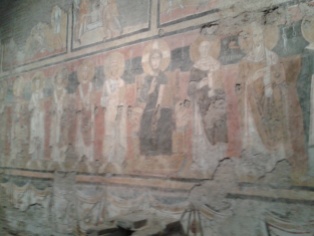
Today, I just want to put up a link to a story I wrote for the Coming Home Network.
The story is about how I went from Highland Presbyterian, to atheist, to agnostic and before eventually returning to the church and became Catholic. Most of all, it’s a story of how ‘I fled him down the nights and down the days’. My journey has taken me from being totally unable to believe in God’s love and mercy, towards beginning to trust that God is love.
Because of this, and maybe also because I’m writing from a female perspective, I’ve tried to put the emphasis on how different events or phases in my life caused me to move towards or away from God, rather than on theology.
The story is called Discovering God’s love and is here.
Coming Home
I can’t speak for other people, but in my case becoming Catholic has felt like finally finding my spiritual home after much wandering. That’s one reason why the title of the Coming Home Network appeals, although I didn’t discover them until recently through a link on another blogger’s site (thank you Charles Johnson).
I’ve enjoyed reading other peoples’ stories on the Coming Home Network and about their journeys from one place to another spiritually. The journey still continues. Joining the Catholic church isn’t an arrival. It’s more like boarding a boat that’s going to help you travel into deeper water and new destinations, using the wisdom of others to guide you into new ways of prayer. Rather than stumbling forward alone, I have the support of others on this journey and the Communion of Saints. One of the amazing things about being Catholic is being able to ask someone like Mother Teresa of Calcutta for her prayers.
When I read other about other peoples’ journeys, I see the spark that’s set them alight, the sense that something’s taken hold of them which can’t be explained logically and which won’t let them go.
I recognise that spark. Sometimes I ignore it, muffle it, forget it for a while, or even rebel against it, but I will never be able to say I haven’t seen what is the aim of my life, what I’m longing for.
It’s the pearl of great price, which a merchant sells everything to buy, or the treasure hidden in a field. Once someone discovers the treasure, they go off, sell all their possessions and buy the field (see Matthew 13:44-46).
The Coming Home Network
The Coming Home Network offers resources and support to people who are thinking of becoming Catholic or who are converts. My only quibble is that there is a heavy bias towards American men, and particularly pastors, among the conversion stories. That isn’t surprising considering that the network was originally set up to support Protestant clergy, who had a lot to lose by becoming Catholic.
However, it’s only a small complaint and I’ve enjoyed and learnt a lot from the written stories and videos. Here are links to two of my favourite videos which feature women:
Sr Miriam Heidland, a Catholic revert. I love what she says about our need to be healed.
Another video I really like is an interview with Thomas and Lovelace Howard. Thomas Howard is author of ‘Evangelical is not Enough’, which he wrote after discovering the liturgy through the Anglican church. The title says it all. He isn’t saying that evangelical is wrong, just that it isn’t enough. Reading this book was an ‘aha’ moment. It helped me understand why I felt more comfortable in churches with structure and liturgy. Further along his journey, Thomas Howard became Catholic. However, for me, the real star of the video is his wife.
In this video, the Howards discuss with Marcus Grodi, not just people who go from the Protestant to the Catholic church, but also the flow in the opposite direction. They acknowledge that both are due, in some mysterious way, to God’s grace.
Yes, it matters which church we’re in, or even if we’re in a church at all, but right down at the most fundamental level is our relationship with God. Sometimes God calls us out of a place we can’t see Him properly into the wilderness or into another place so that we begin or deepen that relationship.












